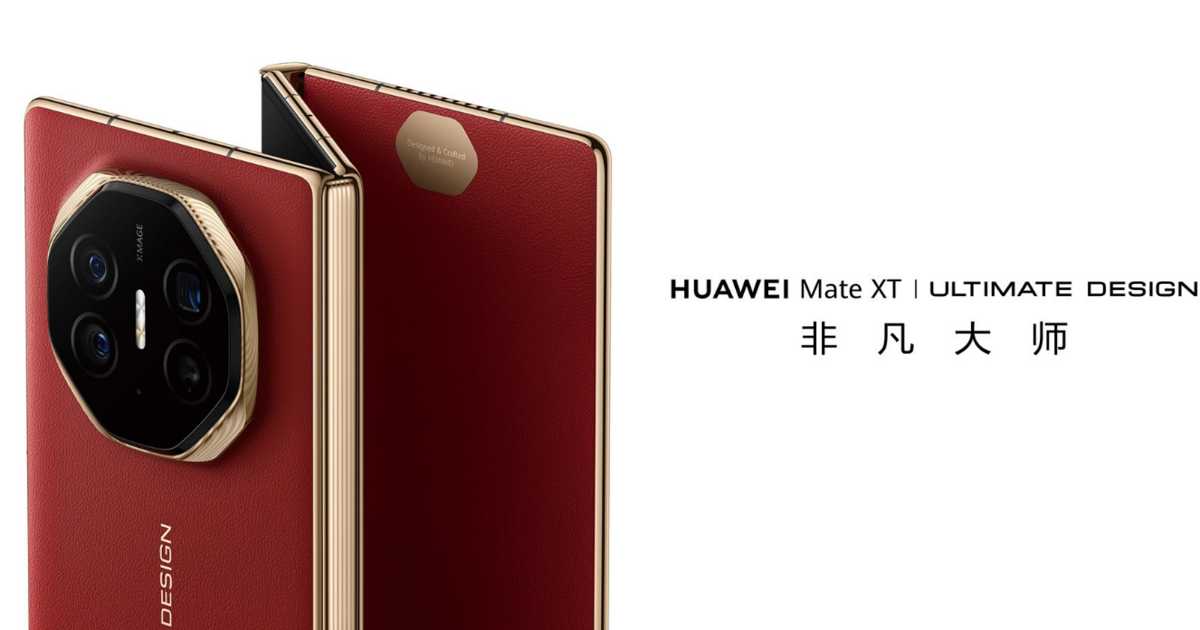Huawei Mate XT Trifold image credit-x.com/GadgetSamachar
As Huawei unveils its groundbreaking trifold Mate XT, the Chinese tech giant continues to assert its dominance in the high-end smartphone market, positioning itself as a formidable rival to Apple’s iPhone 16. Despite ongoing US trade restrictions, Huawei remains resilient, showcasing its ability to innovate and capture consumer interest.
Huawei Trifold Mate XT: A Technological Marvel
Huawei is making headlines once again with the introduction of the Mate XT, the world’s first commercially available trifold smartphone. The device, which folds along two vertical seams to transform from a tablet-sized gadget into a standard smartphone, is set to hit the market on September 20th. Available in red and black, the Mate XT is priced at over $2,000, making it a luxury item aimed at high-end consumers.
This release comes on the heels of Apple’s announcement of the iPhone 16, signaling Huawei’s intent to compete directly with its American rival. The timing of the Mate XT’s launch, just hours after the iPhone 16’s unveiling, underscores Huawei’s strategy to remain at the forefront of the smartphone market, even in the face of stiff competition and trade restrictions imposed by the US government.
Overcoming Challenges: Huawei trade restrictions US
Huawei’s ability to release such an innovative product is particularly noteworthy given the significant challenges it faces. US trade restrictions have limited the company’s access to critical technologies, including advanced semiconductors. However, Huawei has managed to develop its own cutting-edge chips in collaboration with China’s state-backed Semiconductor Manufacturing International Corporation (SMIC). These chips are crucial for the Mate XT and other Huawei devices, although production constraints have delayed the release of the highly anticipated Mate 70.
Despite these hurdles, Huawei continues to thrive in China, where it has successfully eaten into Apple’s dominance in the high-end smartphone market. Since the release of the Mate 60 Pro last year, Huawei has captured a significant share of the market, with many consumers in China opting for the domestic brand over Apple. This trend is indicative of a broader shift in consumer sentiment, influenced by both economic factors and national pride.
Huawei vs. Apple 2024 : A Battle for Market Share
Apple, which has long held a strong position in China, is now facing declining market share in the region. Even with aggressive pricing strategies, the tech giant has struggled to maintain its dominance. In contrast, Huawei’s sales have surged, particularly after the launch of the Mate 60 Pro, which was seen as a symbol of China’s technological independence.
The trifold Mate XT represents Huawei’s latest attempt to showcase its innovation and solidify its position as a leader in the smartphone industry. While the device is not expected to drive significant sales due to its high price and limited production, it serves as a statement of Huawei’s capabilities and resilience in the face of adversity.
The Future
As Huawei continues to navigate the challenges posed by US trade restrictions, its ability to innovate and capture market share will be critical to its long-term success. The Mate XT is a testament to the company’s commitment to pushing the boundaries of smartphone technology, and it will be interesting to see how consumers and competitors alike respond to this latest development.
